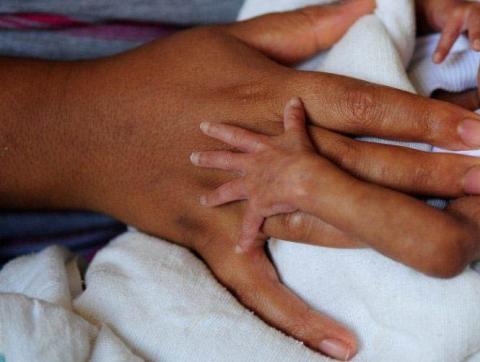Ensuring that ‘at-risk newborns’ receive appropriate yet cost-effective care
This is a summary of the following paper: Narayanan I, Litch J, Srinivas G et al. (2023) At-risk newborns: Overlooked in expansion from essential newborn care to small and sick newborn care in low- and middle-income countries. Global Health: Science and Practice. https://www.ncbi.nlm.nih.gov/pmc/articles/PMC9972386/
This position paper highlights the current state of care for newborns in low- and middle-income countries and argues for the introduction of a new category to reduce child mortality. Globally, great progress has been made over the last 20 years in reducing the under five years mortality rate by 58% and neonatal mortality by 51%. Yet both measures are a long way off the 2030 Sustainable Development Goals targets. This highlights a need to improve care for this group.
Identifying ‘small and sick newborns’ and providing targeted care to this group has proved to be an effective triage system so far. As well as concentrating treatment on the sickest children, this dichotomous model simultaneously allows low-risk children to remain with their mothers to encourage healthy bonding and breastfeeding practices – reducing the burden on healthcare systems that consequently do not need to spend resources on monitoring the whole patient population.
”œNewborn care in low- and middle-income countries has transitioned rather abruptly from essential newborn care for all newborns to a focus on special/intensive care for the small and sick baby without considering an intermediate group of at-risk newborns.”
However, the authors argue that this system can be further divided with the introduction of an intermediate category, recognising that many children fall between the minimal physician care and intensive care levels on the spectrum. For this group, the authors cite findings from sub-Saharan Africa where keeping a closer eye on intermediate children reduces the risk of their deterioration.
The authors also point to findings from Uganda, Indonesia, and India – where the nurse-to-patient ratio ranged from 1:15 to 1:30 – and propose that an intermediate group would reduce this ratio as children requiring only minimal supervision could be seen outside of neonatal units.
In their proposal, the authors define this intermediate group as ‘at-risk newborns’, describing a neonate with increased risk of morbidity and/or mortality who is still maintaining homeostasis and does not require specialist or intensive care. This group still requires close monitoring, as their risk for deterioration is high, but the technology used can be basic and delivered through a practitioner with less formal training than a nurse.
It is logical that this would reduce the burden on the formal healthcare system, which could save both time and money. However, any changes would need to be balanced with the additional cost of training this intermediate layer. The authors note that this would still be cheaper than the dichotomous model, which again is logical, but rolling this out into practice would require additional data on cost and efficacy. There may also be some children lost to follow-up or incorrect referrals of children. as adapting a two-tiered system to the three-tiered model could create confusion for both patients and healthcare workers.


